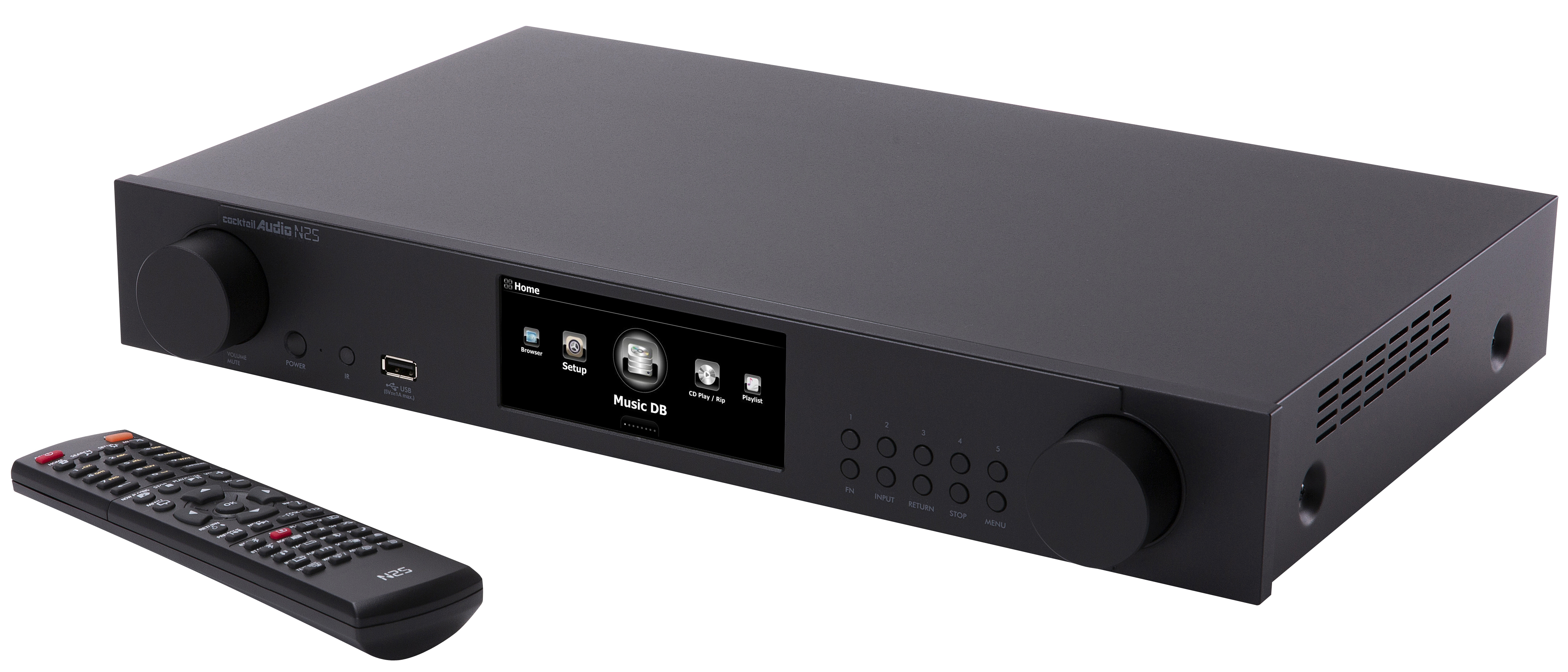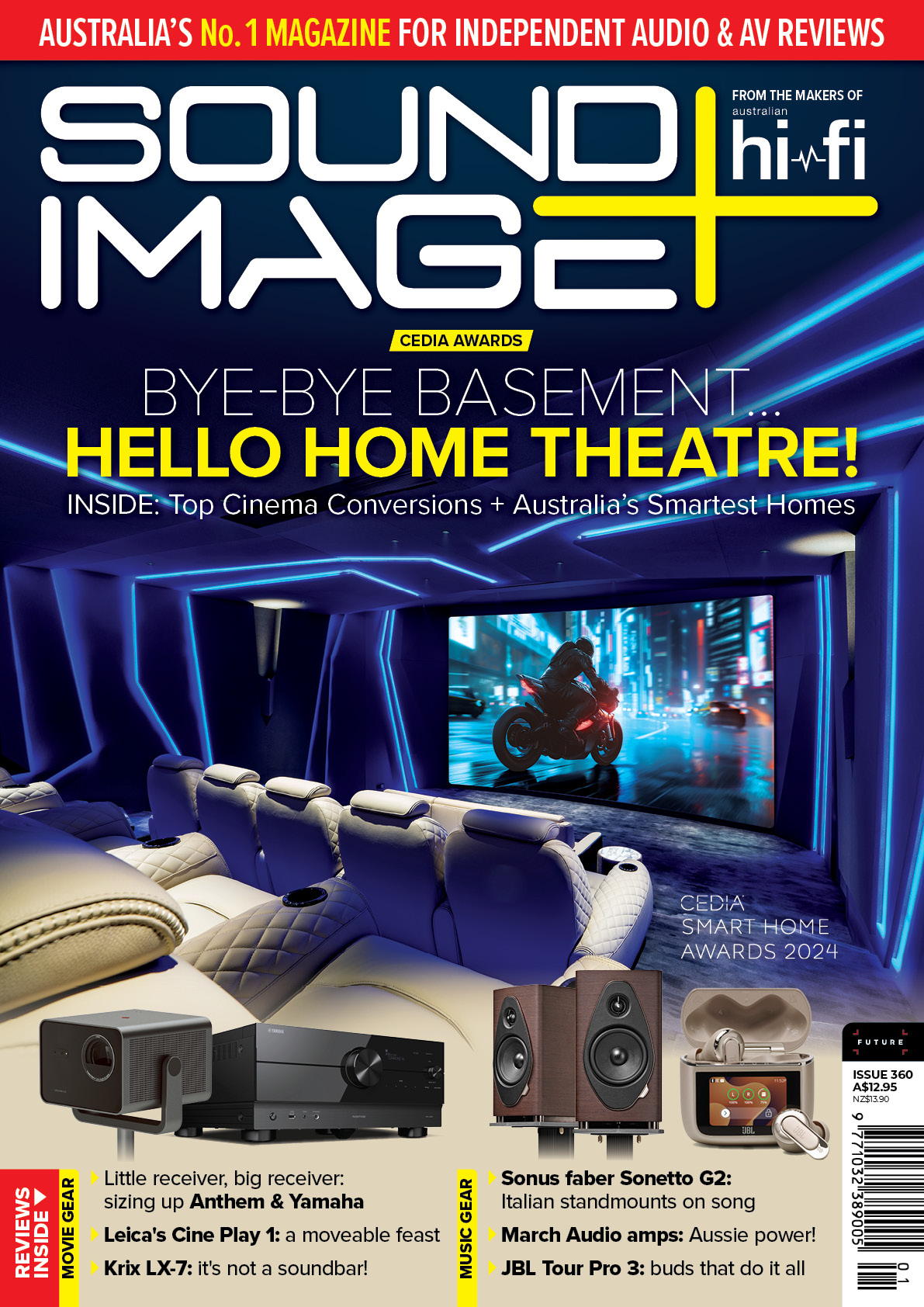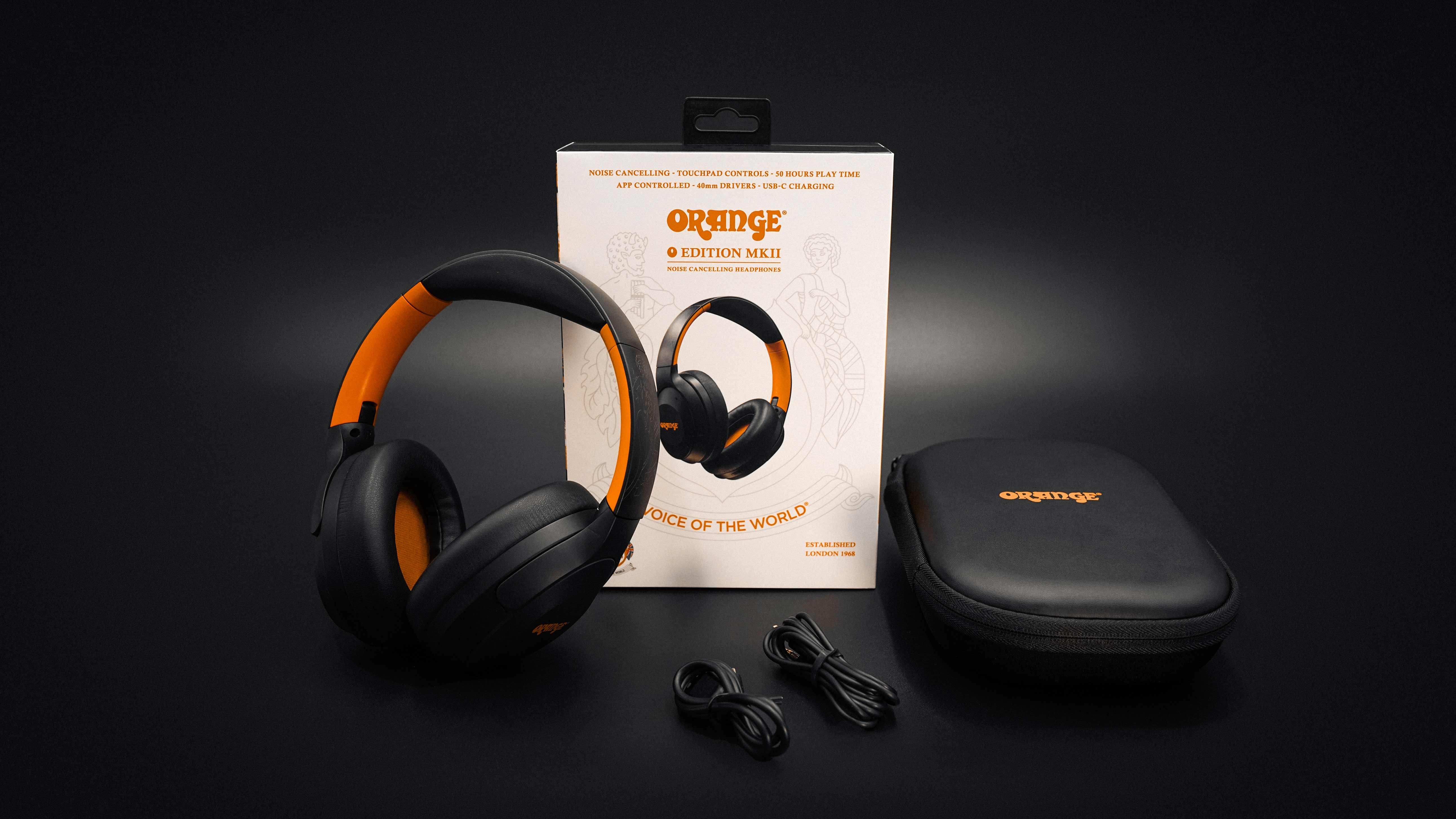Sound+Image Verdict
The N25 is an incredibly capable and versatile networked music player, with high quality audio circuits, wealth of playback options and even the ability to double as a preamp.
Pros
- +
Direct, network and internet streaming
- +
Great DAC and audio circuits
- +
Massive printed manual
Cons
- -
App limitations
- -
Busy remote control
Why you can trust What Hi-Fi?
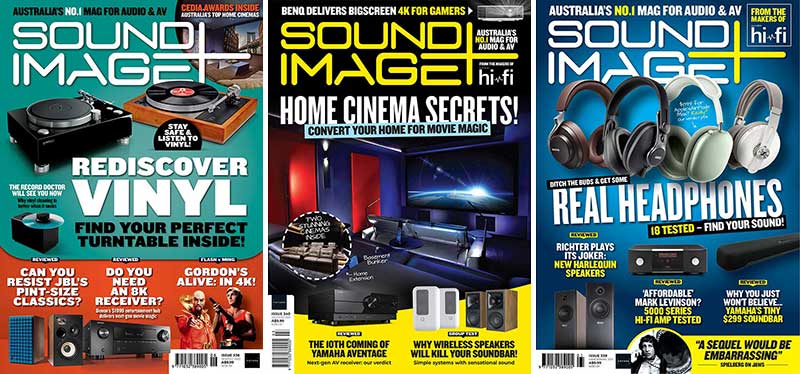
This review originally appeared in Sound+Image magazine, one of What Hi-Fi?’s Australian sister publications. Click here for more information on Sound+Image, including digital editions and details on how you can subscribe.
It’s been a couple of years since we last had one of Cocktail Audio’s remarkable units in for review, and far longer since we first met Novatron, the Korean company behind Cocktail, on a small stand at the annual (usually) IFA Show in Berlin, where they told us of their plans to create the planet’s ultimate network audio players.
It’s a goal they’ve maintained ever since – indeed this new N25 is proclaimed by its own publicity to be “the world’s most advanced Network Audio Player”. How does it make this rather bold claim, and is it true?
Equipment
The N25 is a network playing source which includes a DAC; Cocktail Audio also makes what it calls Pure Network Players, which have only a digital output and no DAC within, and it goes the other way, offering units which have not only a DAC but also amplifiers built in – an all-in-one just-add-speakers solution.
Some models also have CD mechanisms so that they can rip CDs to either an attached or an internal hard drive for later playback. For this process they have subscriptions to Gracenote to identify and label ripped CDs and files.
The N25 has no amplifiers, nor a CD mechanism for ripping, though you can attach an external one for that purpose. But those functions aside, this is definitely a hi-fi source component that might be described as ‘loaded’.
It offers high-quality playback from local USB storage – for which it has not one but three USB-A slots, two USB 3.0 at the rear and one 2.0 on the front panel. It also has a USB-B input for playing from a computer, supporting PCM up to 32-bit/384kHz, DSD Native to 256, and DoP to 128. It can stream files across the network from a NAS library.
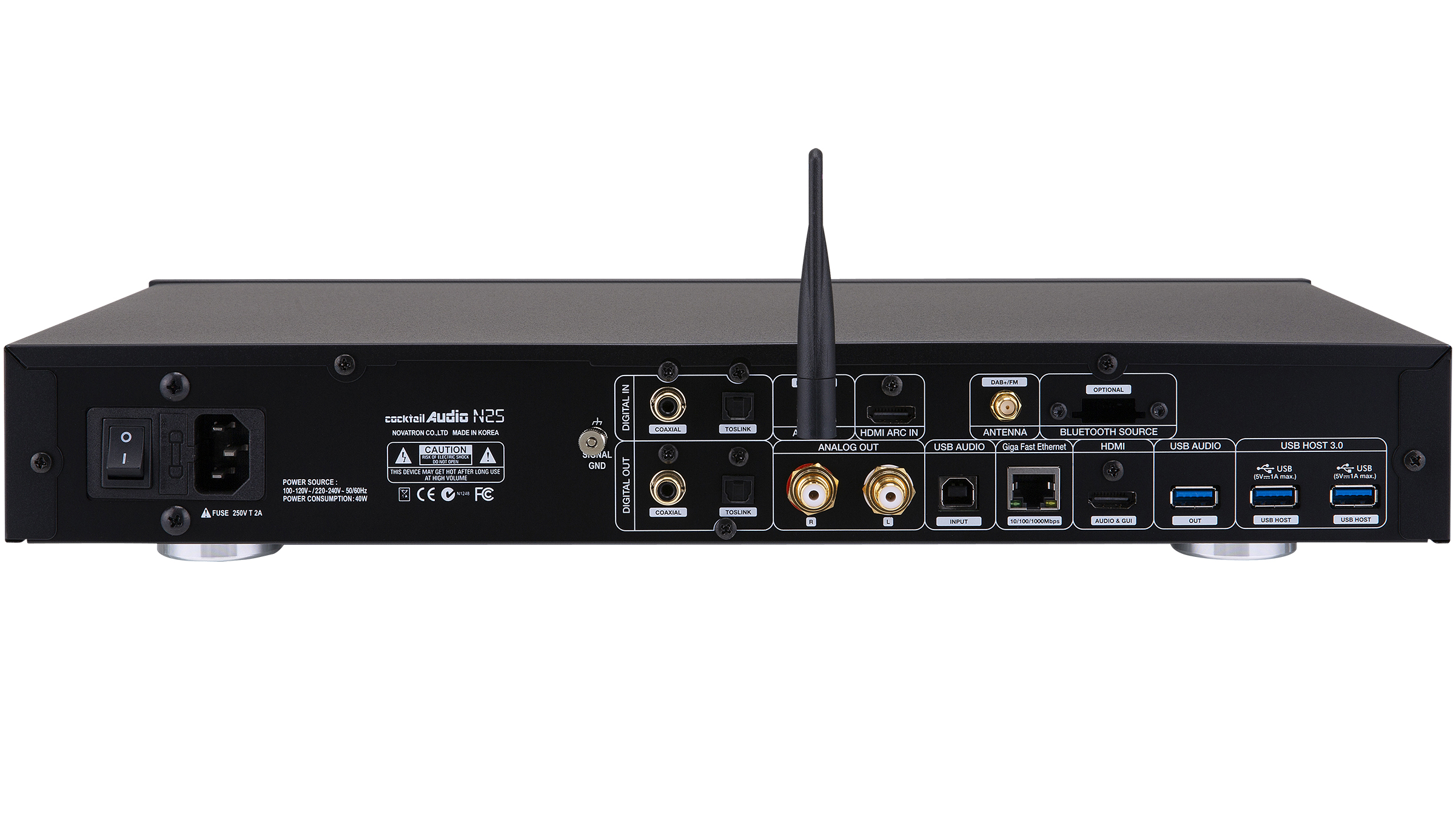
There are additional digital inputs: one coaxial, one optical and – that sign of modern componentry – an HDMI ARC input to play sound from a compatible television. We’d also note that while a Wi-Fi connection requires an additional optional dongle, the Ethernet socket is fast gigabit, so if possible avoid connecting it through any 10/100 Ethernet switch, which would restrict its inherent speed.
With that Ethernet networking the N25 can access built-in music services – internet radio, podcasts, Spotify Connect, Tidal including MQA for Masters playback, Deezer, Qobuz, even HighResAudio. Even more surprisingly it has DAB+ radio built in, or FM if you prefer it (you select one or the other, and use the ‘string’ antenna supplied).
There’s also point-to-point streaming with AirPlay for Apple device owners and Bluetooth for others, which includes the aptX HD codec for only slightly lossy high-quality playback, and aptX Low Latency as well. Optionally, the N25 provides Bluetooth transmission via another dongle, allowing playback from the N25 via Bluetooth headphones or speakers.
And the N25 is fully Roon Ready, an endpoint for anyone investing in Roon’s software subscription.
Potentially a game-changer for many users, the N25 can be used not only as a source but as a preamplifier. You can set its analogue outputs to fixed level, for playing like any source into an integrated amplifier which has its own volume control.
Or the outputs can be variable level, which means you can plug the N25’s outputs straight into a pair of power amps, then using the N25’s own remote or volume knob to control the system. Most unusually the N25 also offers a range of digital outputs which can be similarly switched
from fixed to variable output, providing a locally controlled output via coaxial, optical, USB-A or even HDMI audio out. If you use one of the USB-A sockets for the second optional dongle, Bluetooth Out, you could send its output to a pair of wireless headphones or a Bluetooth speaker.
Indeed the N25 likes to share. Over the home network it can share its access to networked or attached files – or, as we’ll see, recordings – via UPnP, Samba, and even FTP protocols.
So that more or less covers the myriad tasks the N25 can deliver, but of equal importance to its claims of greatness is the circuitry and component quality that Cocktail uses to achieve it.
The N25, though a full-width component, is kept nicely short in height at just 75mm, its casing fully metal, its front panel CNC-cut from 10mm-thick aluminium. The circuit design carefully separates analogue and digital paths for the power supply, while the signal paths are kept short and symmetrical.
The DAC is an ESS Sabre audiophile ES9018K2M, the widely-praised and highest performing low-power DAC on ESS’s books, delivering (from the chip) 127dB of dynamic range and -120dB signal to noise (THD+N).
So with all this, you see where Cocktail’s bold claims come from.
Performance
The Cocktail N25 is certainly pleasingly solid, all its socketry of high quality and the aluminium front panel usefully adorned with an unusually wide though necessarily short full-colour 4.6-inch TFT LCD screen.
There’s also a remote control, around full-size but stocked with so very many tiny buttons and legends that only familiarity can hope to make its use more intuitive. We set up the N25 initially by connecting a USB hard drive to one of the rear USB-A sockets, USB-B to our computer, and Ethernet to its network connection.
We were also delighted, as with previous Cocktail units, to find a full A4 printed manual in the box, which has endless little pictures of the N25’s display as you navigate through all the options.
It goes on for more than 100 pages (licensing information fills the first 16, before the contents list finally appears on p17), and while it’s not particularly helpful in the first instance as a set-up guide, it certainly walks you through whatever task you wish to perform in careful and clear detail.
We acknowledge the ‘green’ and updatable arguments for putting manuals online, but we’re always delighted when a company gives you all the required instructions in the box!
As we began listening through USB-B and playing files from the connected USB drive, one thing was immediately clear – the quality of the DAC implementation. Indeed its clarity showed up the lesser DAC in the amplifier to which we had it connected, playing the same files to a higher quality, notably in timing, with sharper edges to both dynamics and detail, but also more simple involvement and enjoyment, making music that, as in the best of hi-fi presentations, simply couldn’t be ignored.
We settled in for high-res listening first from the USB drive. Acoustic Alchemy’s jaunty jazz track Marrakesh is a delight of tight percussion and percussive guitar strings when played at its best, and that’s how the Cocktail rendered this 24-bit/96kHz file through to its analogue outputs, granting our system a glorious 3D soundstage.
We enjoyed its wide open and rivetingly realistic delivery of AIX Records’ stereo high-res recording of John Gorka’s The Gypsy Life, so that we didn’t miss a note as this on-stage arrangement expands from solo guitar to add mandolin and an extraordinary fretless bass part: by its end we felt positively breathless.
All this feeds into Cocktail’s claims for this being the ultimate network streamer: it’s not just what it does, it’s how very well it does it.
The implementation of streaming services is rather brave. You can log on and navigate them entirely from the front panel, but needless to say, even with the colour screen, this is far from optimal. Thankfully there’s a Cocktail app called Music X Neo, which is compatible with most Cocktail streamers, including the N25.
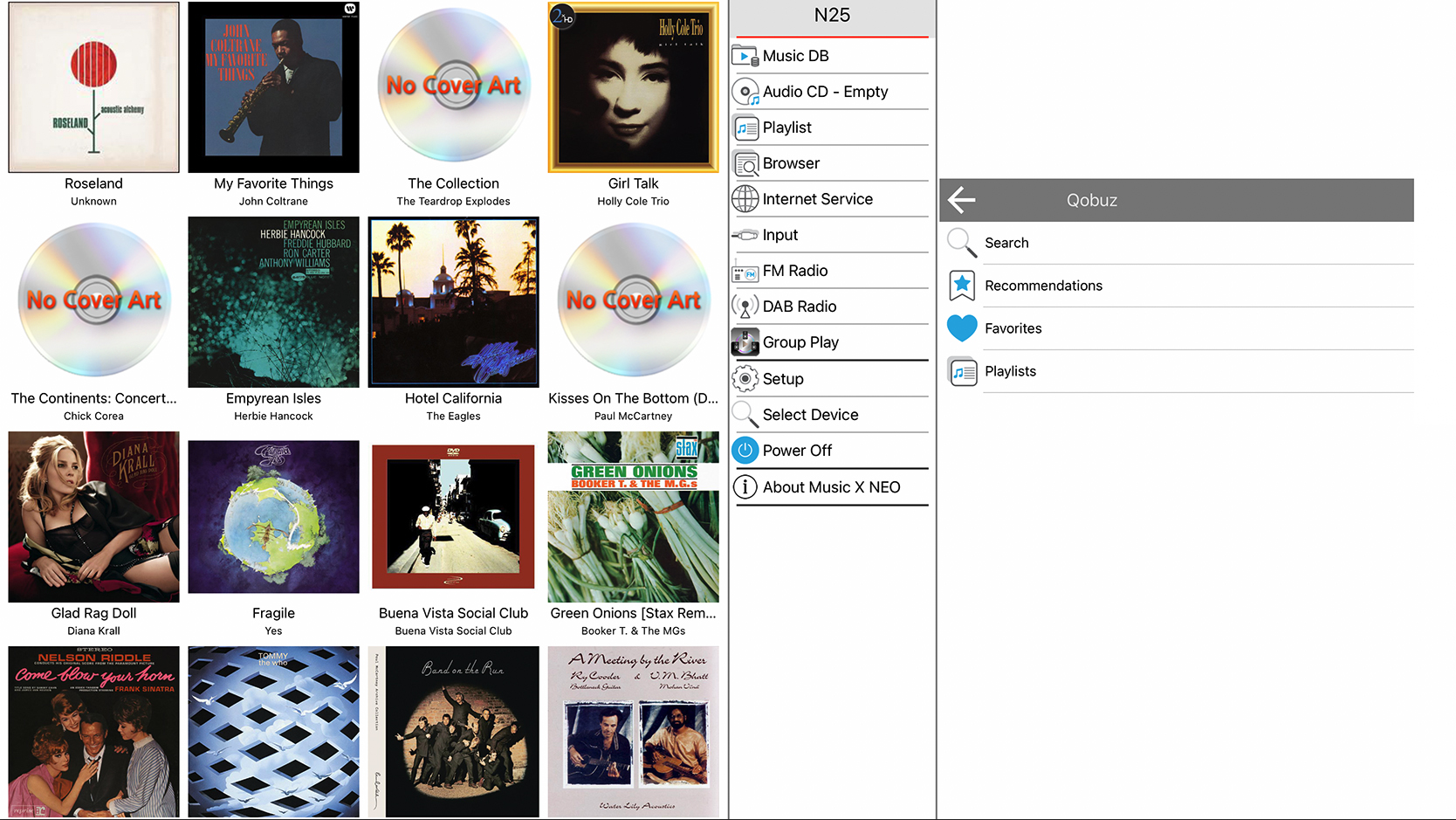
While it operates at tablet or phone size for iOS or Android, the arrangement is pretty basic at times, with swathes of empty space in the tablet presentation, except when you’re browsing long lists or the main ‘Music DB’ screen.
It also has the same problem as many other apps for streamers – the built-in implementation of services such as Qobuz and Tidal are greatly inferior to those apps themselves; you’re left with a choice between using the basic folder-style navigation of Music X Neo, or going to the Qobuz or Tidal apps themselves and finding a way to throw their audio to the N25, but losing quality in the process.
We stuck with the folder-style playback, simply because the Cocktail made the services sound so good. From the lists of Tidal Masters playlists we found the album Drama by Yes and enjoyed the Buggles-authored Into The Lens sounding as crisp and vast as the day it was recorded back in 1980, its MQA encoding unfolded by the N25 to 24-bit/192kHz, though certified merely MQA green; Lou Reed’s Dirty Blvd. came up certified MQA blue at 24/192, if sounding rather clean’n’lite compared with the richer LP version we’re more used to playing. The Qobuz 24/96 version of this sounded mildly preferable to the Tidal MQA version.
One way around this control issue is to use the Roon option. The Cocktail appears as a playback option and receives your music collection, or Tidal or Qobuz, as a bit-perfect stream over your network. This was by far the easiest and prettiest way to control playback, but of course it requires a subscription both to Roon and whatever music service you access.
The app issue doesn’t arise for Spotify, however, as there is Spotify Connect onboard the N25, so you simply use the Spotify app and control the N25’s Spotify playback. Tidal is now doing the same, though the implementation of Tidal Connect is not quite the same as direct streaming; its quality has yet to be confirmed.
For playing DSD files the N25 is nicely flexible. Some DACs can handle native DSD, others DoP containers, others only PCM-converted DSD. The N25 has a menu to select what you’d like it to do, so you can match it with your software.
We had no problem getting any DSD file to play, from any source. The Diana Krall/Michael Bublé duet of Alone Again (Naturally) at DSD64 sounded meltingly smooth and magnificent.
One of the N25’s tricks is identifying music added to its Music Database – a two-year Gracenote licence is included with the product and can be extended at low cost. Then if you have a CD mechanism attached you can rip CDs and edit the information Gracenote attaches.
But even without a CD drive attached you can select files using the Browser and add them to the database; Gracenote adds the artwork, making the app’s browsing of the database far more attractive.
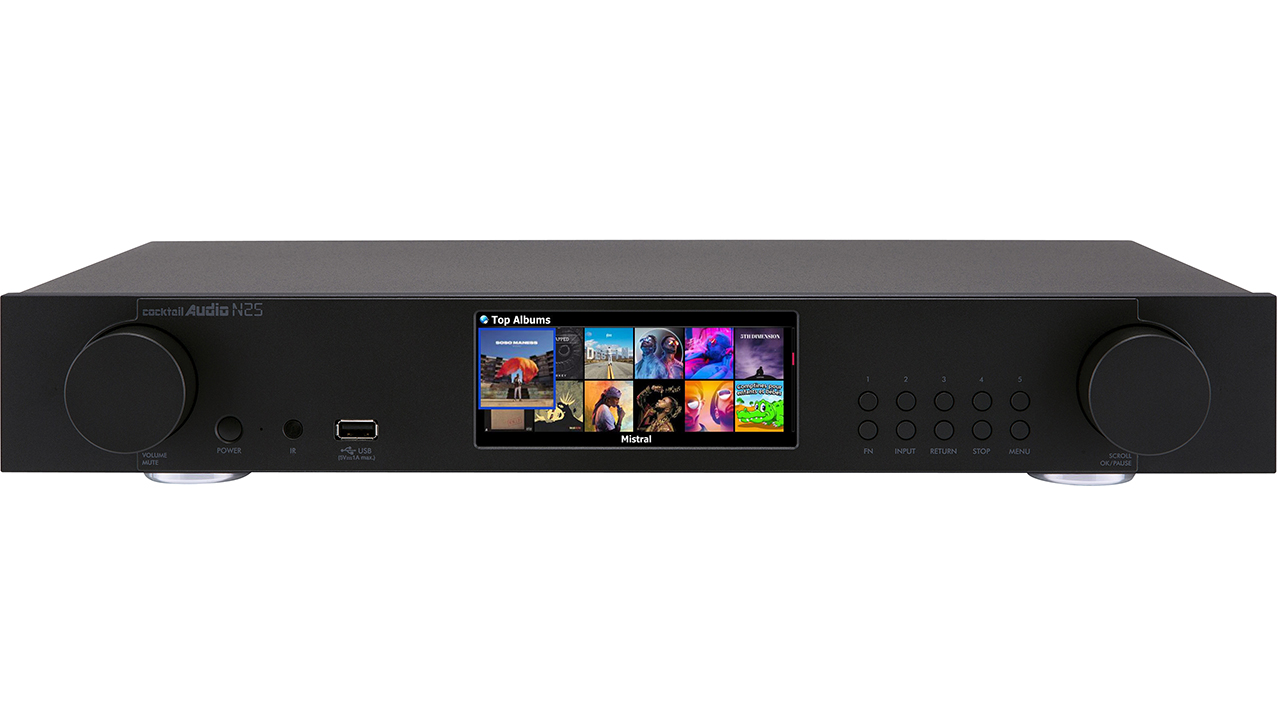
One thing that worked well was the easy ability to record digital or FM radio. We set Triple J playing with the DAB+ function, simply pressed Record, and recording starts. Press stop (if you can find it on the remote), and it stops. The recording goes straight into attached storage. We wondered if we might record when, say, Qobuz was streaming, but sadly the record button had no effect in that mode.
A final ability is Cocktail’s Group Play multiroom function, using the app to play to multiple Cocktail devices at once. Having only one, we couldn’t try this, nor the ‘Bluetooth out’ option requiring the optional dongle.
Instead we just enjoyed tune after tune streaming from the Cocktail N25 from Tidal, Qobuz, connected and networked drives, and straight from computer via USB-B. It never failed to please, and had us sneaking away in the evenings to enjoy more.
Final verdict
Is it the ultimate network player? The N25 is certainly a mix of a myriad playback options together with high quality sound circuits, and the useful ability to operate as a preamp from either analogue or digital outputs.
The app could be sexier, and some of the functionality could be clearer, but you couldn’t ask for clarity in the music it delivers, which is available via so many paths, and always presented immaculately.
Sound+Image is Australia's no.1 mag for audio & AV – sister magazine to Australian Hi-Fi and to the UK's What Hi-Fi?, and bestower of the annual Sound+Image Awards, which since 1989 have recognised the year's best hi-fi and home cinema products and installations. While Sound+Image lives here online as part of our group, our true nature is best revealed in the print magazines and digital issues, which curate unique collections of content each issue under the Editorship of Jez Ford, in a celebration of the joys that real hi-fi and high-quality AV can bring. Enjoy essential reviews of the most exciting new gear, features on Australia's best home cinemas, advice on how to find your sound, and our full Buying Guide based on all our current and past award-winners, all wrapped up with the latest news and editorial ponderings. Click here for more information about Sound+Image, including links to buy individual digital editions and details on how best to subscribe.
